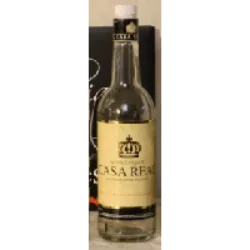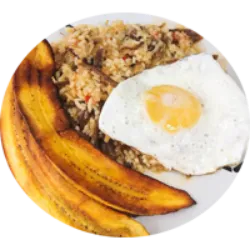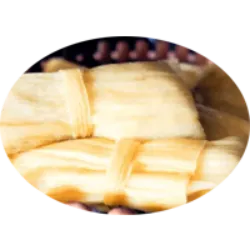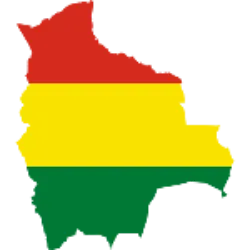Chuflay is a classic Bolivian mixed drink, prepared in a tall glass with ice

Chuflay is a classic Bolivian mixed drink, prepared in a tall glass with ice, a shot of singani and topped with ginger ale, 7-Up or Sprite, often garnished with a slice of lime, often associated with special events. The name was derived from the English railway slang "Short Fly", indicating temporary tracks, and represents the quick intoxication provided by the drink. Chuflay is emblematic in Bolivia, being consumed in different regions and associated with the dice game called cacho.
Singani is a spirit distilled from white Alexandria muscat grapes

Singani is a spirit distilled from white Alexandria muscat grapes, exclusive to the Bolivian Andes, considered the national drink of Bolivia. Its production, started in the 16th century by monastic orders, has roots in the wine regions of Potosí, Cinti and Tarija. The word "singani" probably comes from the Aymara "siwingani". Muscat grape varieties from Alexandria and Misión, introduced by Spanish colonists, influenced wines and singani. The development of the drink was prominent in Potosí, Cinti and on the royal road between Lima and Buenos Aires, with Tarija becoming crucial in the 17th century. Currently, production is concentrated in Tarija, but there is a resurgence of interest in Cinti. Production regulation highlights the minimum altitude and the choice of a single grape variety by the main producers.
Test yourself with one of these challenges 👇
Discover some interesting facts about Bolivia Tourism
Majadito is a typical Bolivian dish, originating in Beni and Santa Cruz

Majadito is a typical Bolivian dish, originating in Beni and Santa Cruz, dating back to the viceroyalty. Made with rice, beef jerky, egg, cassava and fried banana, there are variants with chicken and duck. There are two versions: roasted and pounded, with "majao" referring to the process of kneading the meat. The dish, similar to Spanish paella, includes different meats, highlighting the chicken and duck variants as tasty and protein alternatives.
Humintas, or humitas

Humintas, or humitas, are a Bolivian delicacy made with fresh corn ground in a stone hand mill called a batán. The word "huminta" comes from Quechua and refers to the way they are tied. This traditional dish has pre-Columbian roots and is common in Andean America, with variations of sweet or savory fillings. Preparation varies between countries and includes steamed, roasted and corn soup versions. The department of Tarija is known for its humintas, and an annual fair celebrates this tradition. The Bolivian corn used is creamy, coarse-grained and white in color. The preparation process involves shelling the corn, using the leaves for cooking and tying the humintas before cooking them in water with corn cobs.
Coca tea, or mate de coca

Coca tea, or mate de coca, is an infusion made with coca leaves from the Andean regions of Bolivia and Peru, consumed as a stimulant or to alleviate mountain sickness. Legalized in some South American countries, it is common in restaurants as a digestive. The drink has an energizing effect similar to coffee and contains a minimal amount of cocaine. Consumption is widespread among indigenous peoples for its medicinal and religious benefits. Coca mate, like chewing the leaves, helps with the absorption of oxygen, combats mountain sickness and facilitates digestion. Coca flour is used as coffee and is offered on trails such as the "Inca Route" to alleviate the effects of altitude.
The legend of Chiru Chiru, originating in 1780 in Oruro

The legend of Chiru Chiru, originating in 1780 in Oruro, tells the story of a man, initially considered a beggar, who robbed rich people, distributing the loot among the poor. Wounded during a robbery, he sought refuge in his den, where he cried out for help from the Virgin of Socavón until his death. The discovery of her body, next to the image of the Virgin, led to the creation of the sanctuary of the patron saint of Oruro and an annual festival, marking the entrance to the Oruro Carnival.
The legend O guajojó tells the tragedy of a young indigenous woman

The legend O guajojó tells the tragedy of a young indigenous woman, daughter of the chief of a jungle tribe, in love with a kind and loving young man, but considered inadequate by her father. The chief, using his powers as a sorcerer, convinces the boy to accompany him to the depths of the earth, where he meets his end. Upon discovering what happened, the daughter decides to confront her father and threatens to expose the crime to the tribe. To avoid the scandal, the chief uses his magic to transform his daughter into a nocturnal bird, known as a guajojó, whose plaintive song echoes every night, expressing his sadness at the loss of his love.
HOME


